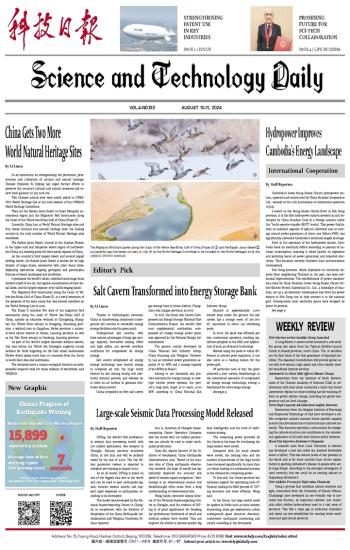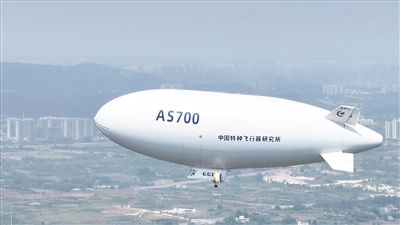
 Strengthening Patent Use in Key Industries
Strengthening Patent Use in Key Industries Promising Future for Sci-tech Collaboration
Promising Future for Sci-tech Collaboration China Gets Two More World Natural Heritage Sites
China Gets Two More World Natural Heritage Sites PHOTO NEWS
PHOTO NEWS Hydropower Improves Cambodia's Energy Landscape
Hydropower Improves Cambodia's Energy Landscape Salt Cavern Transformed into Energy Storage Bank
Salt Cavern Transformed into Energy Storage Bank WEEKLY REVIEW
WEEKLY REVIEW New Graphic
New Graphic Large-scale Seismic Data Processing Model Released
Large-scale Seismic Data Processing Model Released
 |
| China's independently-developed AS700 civil manned airship "Xiangyun" completes its first demonstration flight for low-altitude tourism scenarios, on August 1, in Jingmen city, Hubei province, which marks that the airship has entered a new stage of commercial use. (PHOTO: VCG) |
A new set of measures that capitalize on the importance of creating high-quality intellectual property (IP) to boost the efficiency and competitiveness of key industries, was released recently in a collaborative move by China National Intellectual Property Administration, the Ministry of Education, the Ministry of Science and Technology, and other relevant departments.
The move is designed to expedite the commercialization of scientific and technological achievements, while fostering new momentum and advantages in developing new quality productive forces.
The measures call for leveraging various innovation entities and platforms to cultivate a portfolio of foundational and high-value patents, utilizing diverse examination methods to reinforce IP creation in core technology areas.
The measures also recommend the formulation of policies to align standards with patents, urging enterprises along critical industrial chains to engage actively in international technical standard-setting processes.
As part of the strategy to accelerate the commercialization of patents, the plans highlight the importance of using already existing patents held by universities and research institutions. A thorough analysis and precise matching of convertible patent resources will be conducted to facilitate their swift transformation into key industries, through a combination of online and offline platforms.
For the enhancement of an integrated industrial IP ecosystem, the measures recommend guiding enterprises and industrial parks to take the lead in establishing IP operation centers. These centers will offer services in areas such as patent information analysis, patent navigation, technology transfer, as well as investment and financing.
Furthermore, the measures address the need for coordinated international cooperation and competition in the IP sector.
This includes encouraging industry participation in global IP governance in emerging fields such as digital economy and AI. It also involves conducting impact assessments of international rules on industries, improving overseas IP information service platforms, and regularly updating foreign IP-related information pertinent to key industries.
In addition, enterprises should enhance their IP systems and compliance management capabilities, establishing a monitoring and early warning mechanism for overseas IP risks.

 Next
Next



